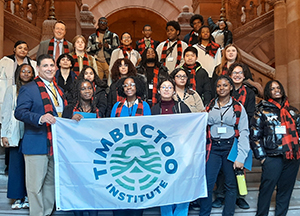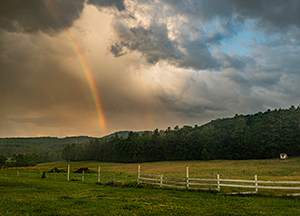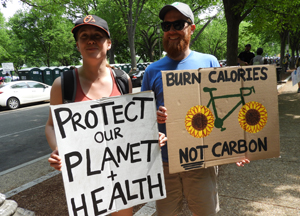
The History of Earth Day: A Global Movement for Environmental Protection
Earth Day, marked every year on April 22, has become an important event in the fight for the environment. From the earliest days planning for a national event in the 1960s to its current status as a day celebrated around the world, Earth Day has helped raise awareness of environmental issues.
The Origins of Earth Day: Environmental Crisis in the 1960s
In the 1960s, the United States faced significant environmental challenges. At the time, there were few laws to protect air and water quality, and pollution was rampant. The Environmental Protection Agency (EPA) had not been established, and industries often discharged pollutants without facing legal consequences. Dirty air and contaminated water were increasingly common.
Gaylord Nelson, then a U.S. Senator from Wisconsin, saw an opportunity to harness the energy of the anti-Vietnam War movement to bring attention to environmental issues. His vision was to draw attention to environmental issues through education and action—this idea would eventually become Earth Day. His goal was to organize a nationwide event—a "teach-in" on the environment—to get the attention of the public and bring these issues to the forefront of the political agenda.
 Senator Gaylord Nelson overlooking the St. Croix River between Minnesota and Wisconsin,
Senator Gaylord Nelson overlooking the St. Croix River between Minnesota and Wisconsin,
a waterway he worked to protect as the first 'Wild and Scenic River' in the United States.
The Idea Takes Shape: Planning for Earth Day
In September 1969, Nelson called for a national teach-in on the environment, encouraging Americans to come together for a day of environmental education and activism. The idea was met with overwhelming enthusiasm, leading to the creation of a new organization, Environmental Teach-In, Inc., to organize the event.
Nelson recruited Denis Hayes, a former intern, to serve as the national coordinator for the event. Hayes assembled a team of 85 staff members to promote Earth Day across the United States. The team also established a steering committee composed of scientists, academics, environmentalists, and students to help shape the event. Notably, Congressman Pete McCloskey, a Republican known for his environmental advocacy, agreed to serve as co-chair of the event.
 Dennis Hayes at the Environmental Teach-In, Inc
Dennis Hayes at the Environmental Teach-In, Inc
Nelson’s vision was for each community to celebrate Earth Day in its own way, addressing the unique ecological challenges faced in different regions. The national office helped promote grassroots events happening across the country.
The First Earth Day: April 22, 1970
On April 22, 1970, Nelson saw his vision come to fruition when the first Earth Day took place, with an estimated 20 million people participating across the United States. These individuals—students, environmentalists, union members, farmers, and even politicians—gathered in rallies, marches, and teach-ins to demand action for a cleaner, healthier environment.
The event saw unprecedented political cooperation, with Republicans and Democrats coming together to advocate for environmental protection. The success of Earth Day was even more remarkable, considering it was organized without the use of modern technology like emails, cell phones, or the internet, tools that are now essential for organizing such large events.
 Thousands gathered in New York City on the first Earth Day in 1970.
Thousands gathered in New York City on the first Earth Day in 1970.
Earth Day’s Lasting Impact
The first Earth Day was a resounding success, and its impact on American politics was profound. It directly contributed to the establishment of the Environmental Protection Agency (EPA) and the passage of key environmental laws, including:
- The Clean Air Act
- The Water Quality Improvement Act
- The Endangered Species Act
- The Safe Drinking Water Act
- The Federal Environmental Pesticide Control Act
- The Resource Conservation and Recovery Act
- The Occupational Safety and Health Act
- The Toxic Substances Control Act
- The Surface Mining Control and Reclamation Act
The success of Earth Day in 1970 demonstrated that public pressure could lead to meaningful political action on environmental issues.
 In 1995, President Bill Clinton awards Nelson the Presidential Medal of Freedom.
In 1995, President Bill Clinton awards Nelson the Presidential Medal of Freedom.
In 1990, Earth Day expanded beyond U.S. borders, becoming a global event. More than 200 million people from 141 countries participated in Earth Day, marking the start of a worldwide movement to raise awareness about environmental challenges. The event set the stage for the United Nations Earth Summit in Rio de Janeiro in 1992, which brought global leaders together to discuss environmental issues on a large scale.
In 1995, President Bill Clinton awarded Gaylord Nelson the Presidential Medal of Freedom, the highest civilian honor in the United States, recognizing his pivotal role in founding Earth Day.
In 2000, Earth Day focused on climate change and clean energy, drawing participation from 5,000 environmental organizations in 184 countries. The event reached hundreds of millions of people, continuing Earth Day's legacy of global activism for the environment.
Gaylord Nelson passed away in 2005, but he lived to see the impacts of his vision. Now, his legacy endures in the over one billion people worldwide who celebrate Earth Day each year.
Earth Day and the Adirondack Council’s Efforts
In 2016, the Adirondack Council began awarding micro-grants on Earth Day to help farmers and small businesses in the Adirondack Park become more sustainable and environmentally friendly. Through its Essex Farm Institute, the Council has awarded over $240,000 in grants to promote environmental sustainability in the region. The Council also works to educate state legislators and the governor about critical environmental issues affecting the Adirondack region.
Continuing Earth Day’s Legacy
The history of Earth Day illuminates the power of grassroots activism and public engagement in shaping environmental policy. As the fight for a healthy environment continues, Earth Day remains an essential opportunity for individuals and communities to take action. Whether through education, activism, or supporting sustainable practices, the legacy of Earth Day is an important opportunity for each of us to take responsibility for the planet’s future.




